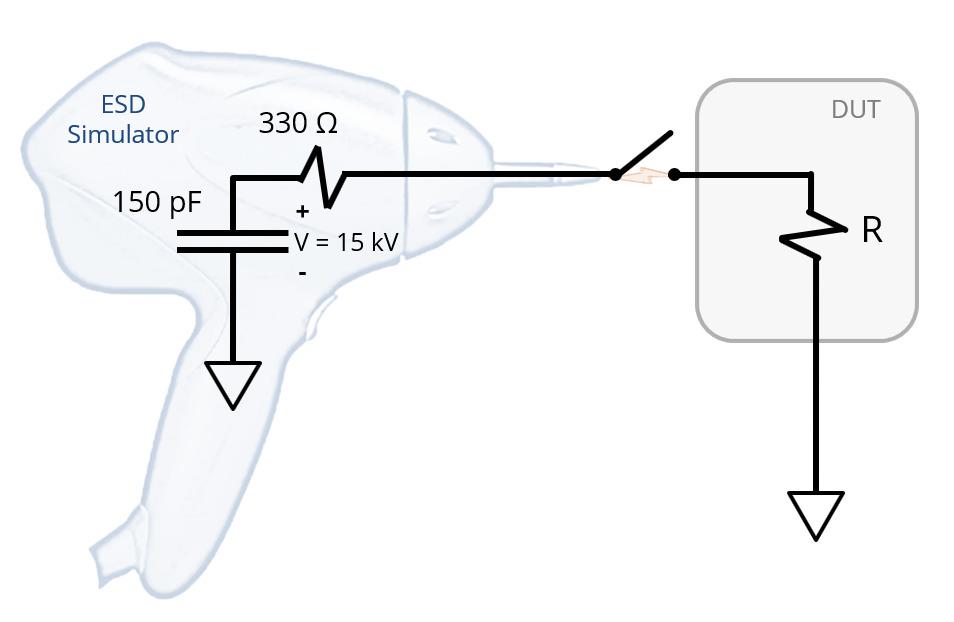EMC Question of the Week: February 15, 2021

An ESD simulator (R = 330 Ω, C = 150 pF) discharges into a load with a resistance, RL. Which of the following load resistances receives the most energy from the simulator?
- RL = 100 Ω
- RL = 330 Ω
- RL = 1000 Ω
- same for all values of RL
Answer
The best answer is “c.” If we assume that all the current from the ESD simulator flows through the load, the energy stored in the capacitor is dissipated in the simulator resistance and the load resistance. The rate at which the energy is dissipated is I2R. Both resistances see the same current so the rate of power dissipation and total energy dissipated are proportional to R. Higher values of RL dissipate a higher fraction of the total energy.
Of course, real ESD events often involve non-linear behavior. If the value of RL were too high, the discharge current might find another path (e.g. by arcing around or through the resistive load).
NOTE: In the absence of arcing, is it reasonable to assume that that all the current from the simulator flows through the load? The highest frequency components of the discharge waveform are unlikely to pass through the load if they can find a lower-impedance displacement current path. Displacement currents can be viewed as slowing the rate at which the charge finds a resistive path to ground, but they do not affect the total charge flowing through the resistance. This could cause the load resistance to see a different current waveform than the simulator resistance and slightly reduce the energy it dissipates.
Have a comment or question regarding this solution? We'd like to hear from you. Email us at
